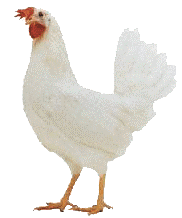Blind chickens lay more eggs

Apparently a strain of naturally blind chickens not only begins reproduction earlier, but produces more eggs per cycle than their sighted counterparts.
A researcher from the University of Guelph has found this to be true, and is now working to understand what influences the increased production in blind birds.
Good management tool
Gregoy Bedecarrats, Animal and Poultry Science, is studying how light affects reproduction patterns in a flock of blind Smokey Joes, a strain of White Leghorn birds, saying that better understanding of how light influences reproduction in birds will give producers more tools to alter light techniques for higher performance. He believes that this will be a good management tool for producers when some answers have been found.
This study began in 2004 when he received a flock of blind Smokey Joes from researchers from Michigan State University, at which point little had been studies or researched.
Light is integrated differently
According to Bedecarrats, chickens typically start reproductive development after sensing an increase in day length, when more light is absorbed by a portion of the brain – the hypothalamus. However, in blind chickens, light is being integrated differently. Although light directly stimulates the hypothalamus, it also inhibits reproduction when it is perceived by the retina of the eye. Because blind birds lack retinas, they experience only the stimulatory influence on the hypothalamus, which encourages them to begin laying eggs earlier.
Two pathways to interpret light
Bedecarrats says two different pathways co-exist in birds to interpret their daily exposure to light. The first is a pathway that involves blue-green light wavelengths (mainly perceived by the retina). The second pathway involves wavelengths from the red spectrum, which penetrate the skull and stimulate the hypothalamus.
He suggests that blue-green rays can have inhibitory properties and that red rays are what stimulate chickens to begin their laying cycle. When both pathways co-exist (in normally sighted birds), the amount of light they’re exposed to each day dictates the physiological response. So on short days, the inhibitory pathway is prevalent; on long days, the red rays overpower and initiate reproductive maturation.
Blind birds lack retinas
According to Bedecarrats’ research, blind birds lack retinas and therefore do not have the inhibitory effects of the blue-green rays, so they begin laying eggs earlier, even without any increase in day length.
Related links:













